In windy areas use a heavy mulch like bark chips or landscaping rock. To stop light mulch including straw or sugar cane from blowing away cover them with a layer of bark or tree mulch. Use brick edging to stop the wind from moving mulch out of garden beds and plant low growing shrubs to block the wind. Try an edible wind break to stop mulch blowing away.
How to stop mulch blowing away – 7 Ideas
- Use heavy mulches like bark mulch or landscaping rock in windy spots
- Use brick edging to keep mulch in garden beds
- Cover light mulches like straw or hay with bark mulch or compost
- Plant low growing shrubs in mulch to block the wind
- Plant an edible wind break like climbing beans, raspberries or passion fruit vine
- Use solid wind breaks like brick walls or garden screens
- Water mulch in immediately after laying it to settle it into place
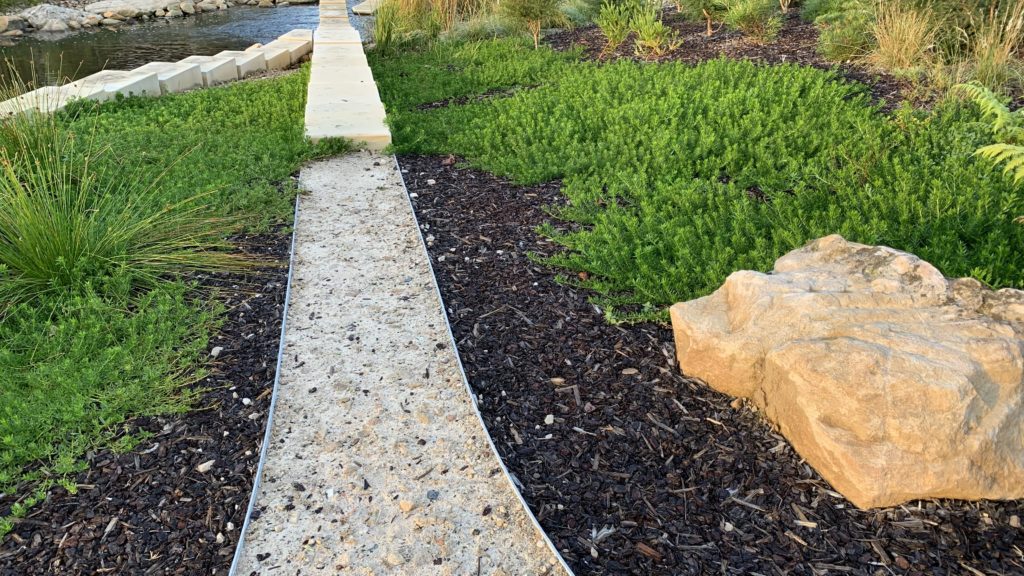
How to stop sugar cane mulch from blowing away
Sugar cane mulch can be held in place by adding a thin layer of bark or mixed tree mulch to the top. Bark mulch is heavier and will stop the sugar cane from moving in the wind. Watering the sugar cane mulch as soon as you lay it will help to hold it down. Adding water will help the pieces of sugar cane pieces to interlock and stay together. This holds them in place.
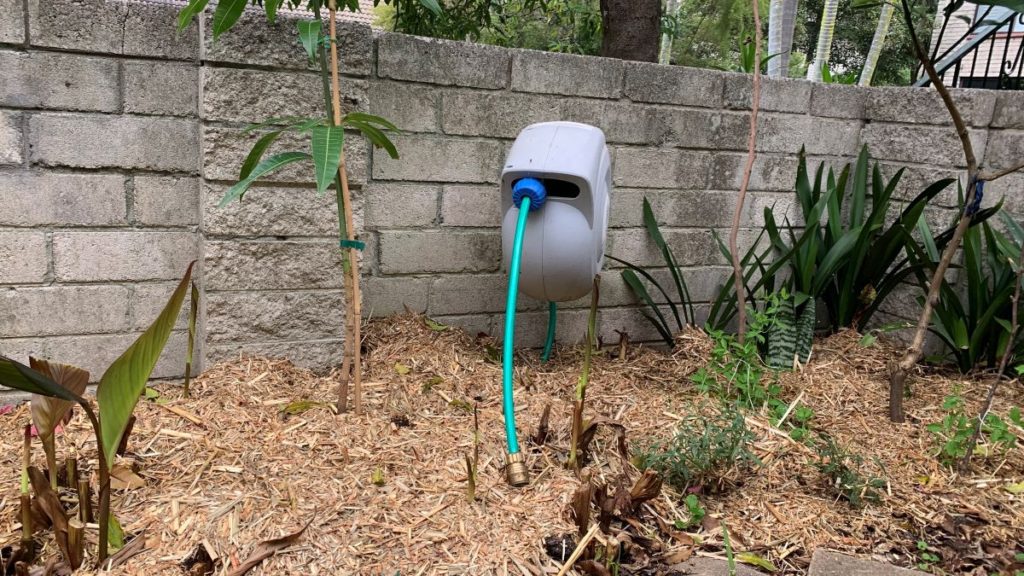
How to stop landscaping bark mulch from blowing away
Bark mulch or mixed tree mulch are naturally heavier mulches so will not blow around in your garden. A mixed tree mulch with small and large pieces from tree branches and leaves will create a blanket that holds the smaller pieces in place when it is windy.
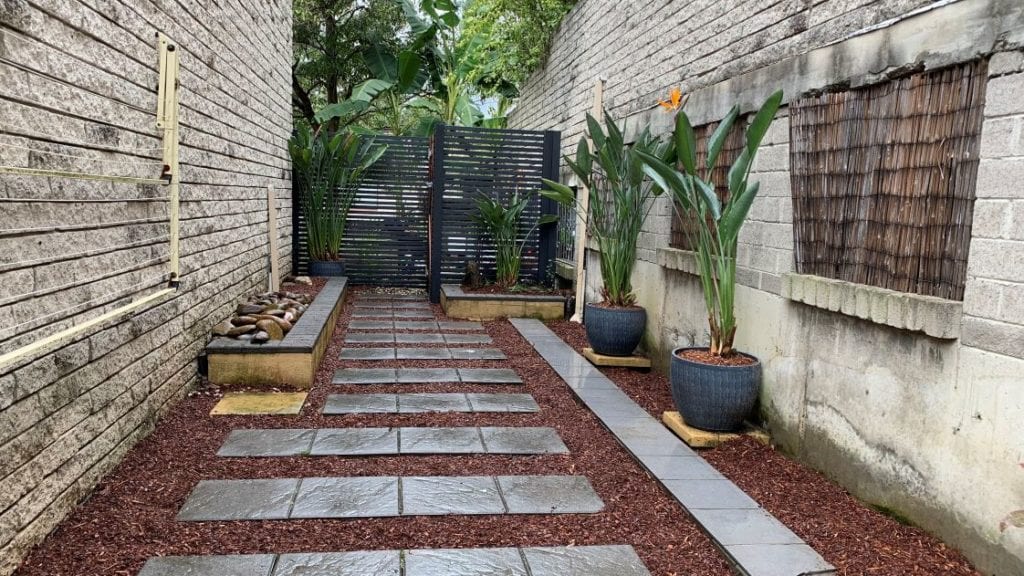
How to stop straw mulch from blowing away
Straw mulch can be bought in bales or in bags. Bale straw will stay in place if you lay it thickly in your garden. The straw will not be chopped in smaller pieces and will come apart in biscuits. These can be laid thickly under trees, over the top of large vegetable gardens or around flowers and shrubs.
Using barriers to protect mulch
If you live in a very windy area you can use a barrier to stop the mulch from blowing away. For raised garden beds, keep the soil level 1-2 inches below the top of the garden bed. This will leave space for the mulch and create a barrier when the wind blows over the top of the garden.
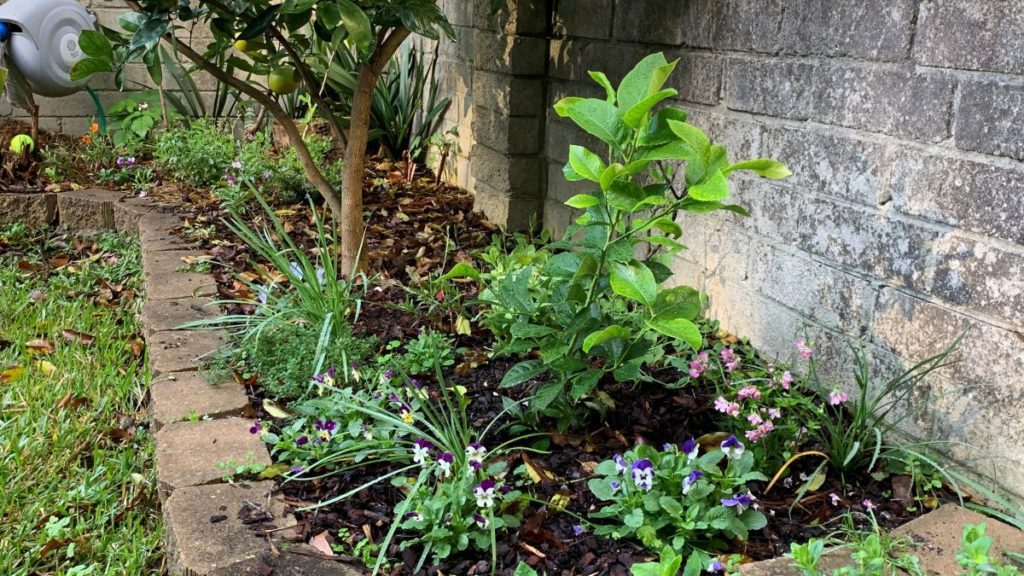
You can also use straw bales as protection around your garden beds. Lay these on their side around your vegetable beds. These will protect your garden beds from strong winds and stop the mulch from moving around in the bin.
Using plants to stop mulch from blowing away
The best way to keep mulch in place is to plant into your garden beds close together. Densely planting your garden beds will stop mulch from blowing around as the plants will stop the wind from blowing straight over the top of the beds. The mulch could only move a small way between the plants before it is stopped.
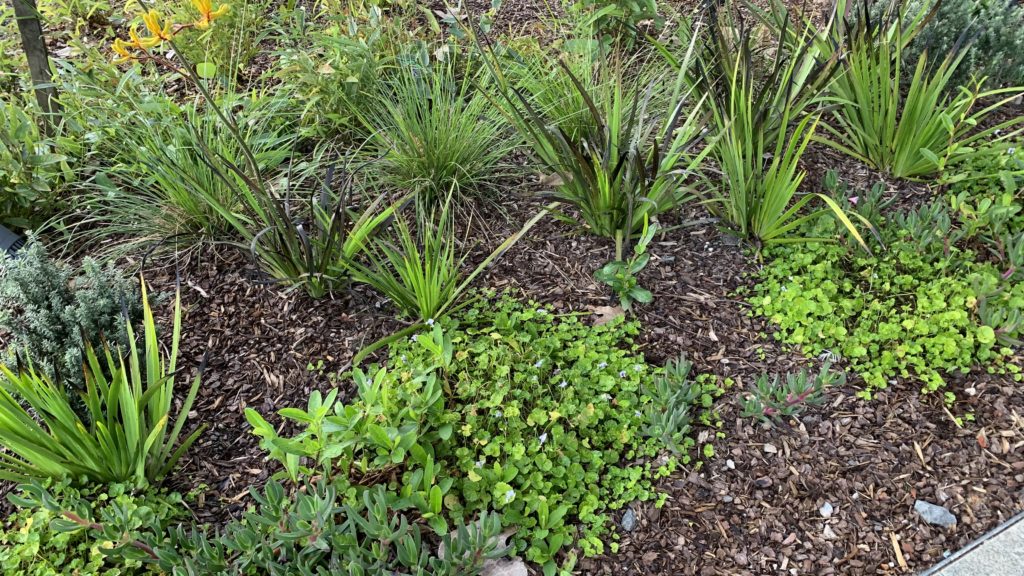
Stop leaf mulch from blowing away
Leaf mulch can move around if you have placed it in an open area. The best way to use fall leaves as mulch is to turn them into compost first. Collecting fall leaves and placing them in a composting bag or bin is a great way to break them down and turn them into rich compost.
When you place this mix on top of your garden beds it will be heavier so won’t blow away.
Using landscaping rock in a windy garden
Landscaping rock is a heavy mulch that won’t blow away in a very windy spot. Landscaping rock works well as mulch around dry area plants such as succulents or cacti. For many other plants rocks can hold and reflect to much sun. They will also allow weeds to grow through time.
Decide if landscaping rocks are the right look for your garden and the type of plants you want to grow.
Mixing mulch together so it won’t blow away
The best way to stop lighter mulches like sugar cane, hay or straw is to mix them together with a heavier mulch. A 50:50 mix of sugar cane mulch and bark mulch will give the benefits of the quick break down of sugar cane while being held down with the bark mulch. This mix is perfect for under fruit trees and larger flower beds.
Vegetable gardens benefit from a 50:50 mix of compost and straw mulch. Use this when preparing new garden beds it is the perfect mulch to place over bare soil that won’t blow away. As you water the vegetable garden, the nutrients from the compost will be washed down to the plants and will help to stop the straw mulch from blowing away.
How to stop mulch from blowing away on hillside
Mulch can be held in place on hillsides with the right choice of plants. A sloping sight will benefit from plants that will grow closer together and hold the soil and mulch in place. When the wind comes, the mulch will only move a small way between plants.
A good choice of mulch for a sloping site is mixed tree mulch. The different sized pieces will knit together holding it in place on the slope
Growing edible wind barriers
Creating wind barriers using natural materials or plants is a great way to stop wind from blowing your mulch away. Using edible plants is a great way to increase the space you have to grow food while stopping the wind.
You can grow climbing plants on a trellis to create a wind break. Plant climbing passionfruit or create a wind break using fast growing shrubs like Lilly Pilly, salt bush or lavender which have the added benefit of deterring pest insects and attracting pollinators.
Check out the video below for tips on growing an edible wind barrier for your vegetable garden.
Using screens as a wind break
If you are in a very windy area, adding a screen to your garden can be a great idea. These are great options to create a modern space and stop the wind. You can choose steel, timber or Oxy-metal which is designed to rust and give a rustic look.
Mulching windy spots – Summary
Many mulch choices won’t move in the wind after they have settled in. Always water over the top of mulch after you lay it as this will help it to settle in and for the particles to knit together and stay in place. My favorite mulch for windy areas is a mixed tree mulch which contains small and large particles.
A mixed tree mulch has other benefits for your garden as it will help to keep moisture in, it will break down over time and add organic matter to your garden beds. This improves the soil and makes a great place for planting in the future.
Tree mulch works well for open areas of garden but for vegetable beds, I like to use a lighter mulch like sugar cane or straw because it breaks down quicker. Mix this together with compost to help to hold it in place in windy areas.
Happy mulching.
I am an accredited practicing dietitian, experienced gardener and a dedicated cook. I love writing and sharing my experience so you can learn from my successes and mistakes.

Comments are closed.